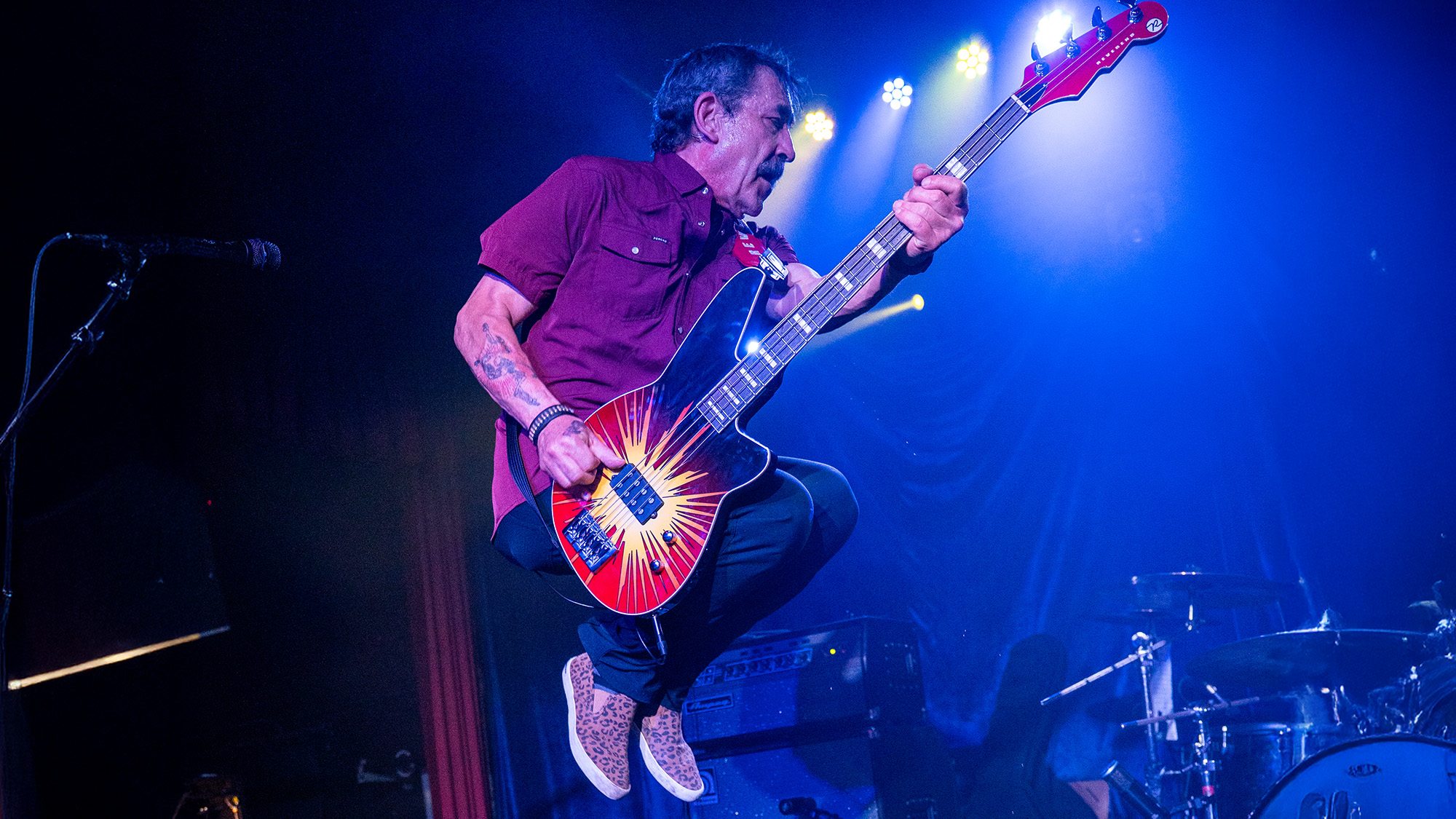“The best way to get the bass sound I wanted was to play like Larry Graham. But it wasn’t fast enough for me”: Victor Wooten sums up his game-changing slap technique
Victor Wooten’s double thumb technique is unlike any other – and he has Larry Graham to thank

Since the release of his debut album, A Show of Hands, which contains some of the most complex, but enjoyable music ever recorded on the bass guitar, Victor Wooten has been celebrated among the bass world’s elite. While he's continued to release wonderfully assured solo albums and remains a cornerstone of the indefinable Bela Fleck & The Flecktones, his philosophical depths have also come to the fore. No more so than in his book, The Music Lesson.
Yet for most bassists, Wooten will forever be known for his incredible plucking, slapping and popping speed. “For me that started with Larry Graham,” he said in an upcoming interview with BP. “On Everyday People by Sly And The Family Stone, it was just one note over and over, but it was a funky note. It wasn’t exactly the same note – even if everything else was muted and you were just hearing the bass, you’d start dancing to it.
“So I found the best way to get the sound I wanted was to play with my thumb like Larry Graham. That worked, but it wasn't fast enough for me. As a kid, I would learn drum beats on my bass, and I wanted to get the drum fills and the cymbal crashes in there as well.”
Wooten’s unique approach to bass caused shock waves when he first emerged circa 1986, as he brought an unmatched duality to the instrument, creating polyrhythmic parts via tapping and slapping, all with a phenomenal musicality and rock-solid groove. How did he develop his double thumbing technique?
“I was already thumbing and plucking like Larry Graham, but I also learned how to pluck with multiple fingers," Wooten told BP. “That started when my brother Regi, who is a guitar player, showed me how to use my thumb in two directions, like a guitar pick. That opened up a whole new world, because I realised that I could double my speed without doubling my motion.
“I found I could make the downstroke with my thumb, the upstroke with my thumb immediately after, and at the same time I could pluck with my index finger and my little finger. That gave me four strong notes together with no extra motion and very little extra effort. A whole new universe of styles opened up for me, it was just like a light going on. I was about nine or ten when it came along.”
Wooten’s ‘open-hammer plucking’ technique involves hitting an open string with your right thumb, hammering a note with your left hand, and then plucking a note with your right index finger, creating a triplet. “A typical playing pattern for me is to pluck down with my thumb, hammer-on with my left hand for a note, and then either pluck back up again with my thumb, or with one finger.
All the latest guitar news, interviews, lessons, reviews, deals and more, direct to your inbox!
“If I play an E with my thumb on the seventh fret of the A string, I will hammer on the open A string first, but that’s just a percussive sound, and then play the E with my thumb, and then pluck another note with one finger, so that gives a triplet. I can add another pluck with another finger straight away. If I add an upstroke with my thumb, that can be another note right there, so you can have a quintuplet and all you see is my hand go down once and up once. That is the basis of the technique I use.
“I can pluck more than once, thumb more than once and hammer-on more than once really quickly, and the movement is still just down and up. When you add pitches in, you have a whole range of notes and sounds you can get.”
While Wooten’s technical chops remain a huge part of his success, at least in our community – rest assured, there’s more to him than sheer fretboard pyrotechnics. “I try to consider myself a musician more than just a bass player. Bass happens to be my instrument, but it’s like if you have a bass singer it doesn’t mean that they can’t hear high melodies or if you buy his record everything is all going to be really low. It doesn’t work like that, it just means that’s his voice. And I look at my own music that way: just because I play the bass doesn’t mean I can’t hear the rest of the musical spectrum. The music, in my opinion, is bigger than my own ego. I’d rather provide people with music.
“That's the other thing I will say about Larry Graham is that he's a complete musician. He wasn’t just a bass player. He could cross over from the heavy funk stuff and be a singing sensation. He had a few big hits, one of them was a ballad called One In A Million. A lot of people think he was just a vocalist. I love it when you get a musician who is broader that just the instrument they play.”
To find out more visit victorwooten.com.

Nick Wells was the Editor of Bass Guitar magazine from 2009 to 2011, before making strides into the world of Artist Relations with Sheldon Dingwall and Dingwall Guitars. He's also the producer of bass-centric documentaries, Walking the Changes and Beneath the Bassline, as well as Production Manager and Artist Liaison for ScottsBassLessons. In his free time, you'll find him jumping around his bedroom to Kool & The Gang while hammering the life out of his P-Bass.
